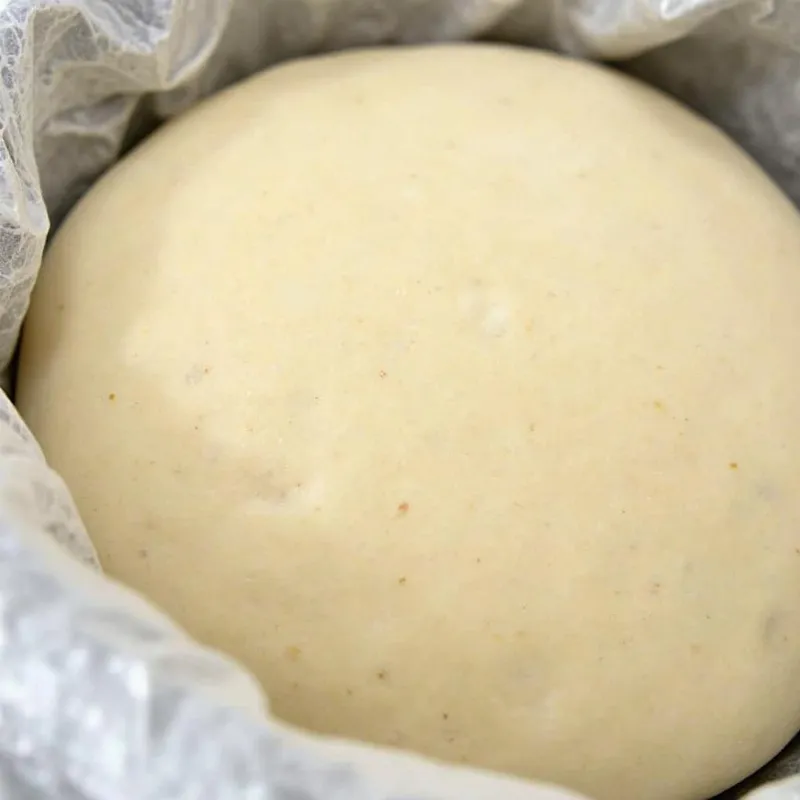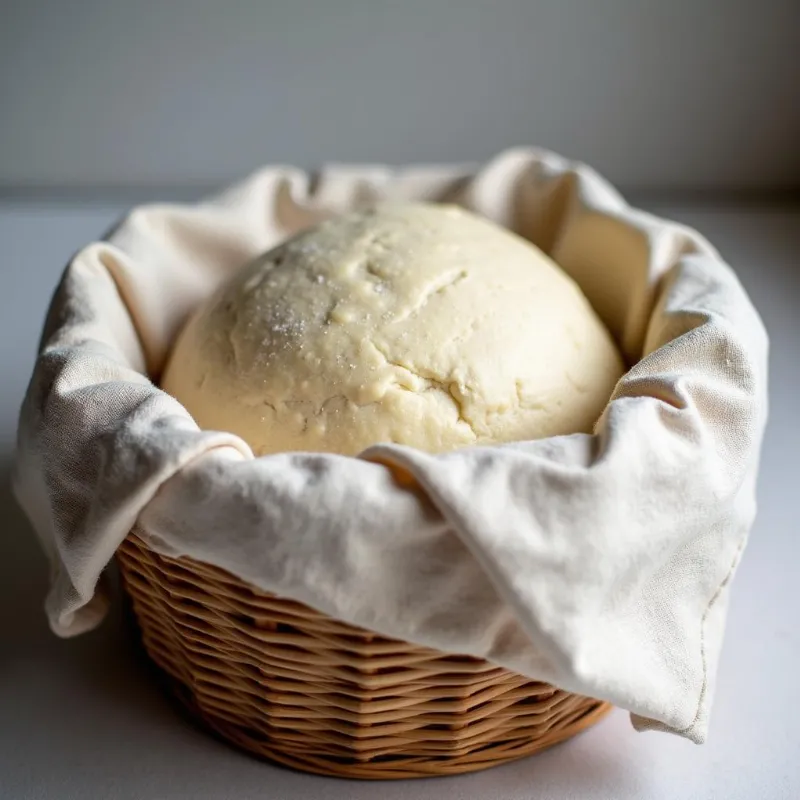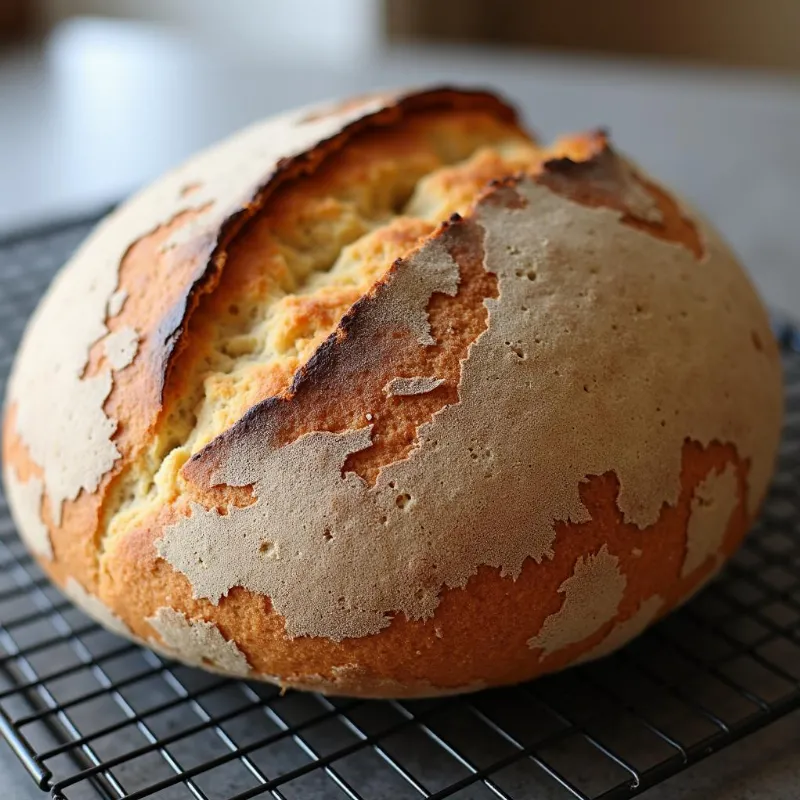Dive into the delightful world of baking with this comprehensive guide to making the perfect vegan sourdough bread. This recipe is easy to follow, even for beginners, and will equip you with all the knowledge you need to craft a delicious, artisan-style loaf right in your own kitchen.
Why You’ll Love This Vegan Sourdough Bread
Sourdough bread has been enjoyed for centuries, appreciated for its unique flavor profile and rustic charm. But did you know that this artisan bread is naturally vegan? That’s right, traditional sourdough relies on a simple combination of flour, water, and salt, making it perfect for those embracing a plant-based lifestyle.
This recipe goes beyond the basics, providing you with expert tips and tricks to ensure a successful bake every time. We’ll demystify the sourdough starter, guide you through the art of kneading, and teach you how to tell when your bread is perfectly proofed and baked.
Gathering Your Ingredients
Before we embark on this bread-making journey, let’s gather our ingredients. The beauty of sourdough lies in its simplicity, requiring just a handful of pantry staples:
- 500g strong white bread flour, plus extra for dusting
- 100g whole wheat flour (optional, for added flavor and texture)
- 350g lukewarm water
- 100g active sourdough starter
- 10g salt
Making Your Vegan Sourdough Starter (If You Don’t Have One)
A sourdough starter is the heart of any sourdough bread, and it’s easier to make than you might think! It’s a simple mixture of flour and water that ferments over time, cultivating wild yeasts and beneficial bacteria that give sourdough its distinctive tangy flavor.
Here’s a quick rundown on creating your own sourdough starter:
- Combine 50g of rye flour and 50g of lukewarm water in a clean jar. Stir well to form a thick paste.
- Cover the jar loosely with a cloth and leave it at room temperature (ideally around 70-75°F or 21-24°C) for 24 hours.
- After 24 hours, discard about half of the mixture and replenish it with another 50g of rye flour and 50g of lukewarm water. Stir well.
- Repeat this feeding process every 24 hours for at least a week, or until your starter becomes bubbly, doubles in size after feeding, and develops a pleasantly sour aroma.
Expert Tip: The process of creating a thriving sourdough starter can take anywhere from a few days to a couple of weeks. Patience is key here!
The Step-by-Step Guide to Baking Vegan Sourdough
Now that you have your ingredients and your starter is active and bubbly, let’s bake!
Day 1: Mixing and Kneading
- In a large mixing bowl, combine the flours and lukewarm water. Mix until a shaggy dough forms. Cover the bowl and let it rest for 30 minutes (this is called autolyse).
- Sprinkle the salt over the dough, then add your sourdough starter. Begin kneading the dough in the bowl for about 10-15 minutes, or until it becomes smooth and elastic.
- Transfer the dough to a lightly oiled bowl. Cover the bowl tightly with plastic wrap and let it ferment at room temperature for 4-6 hours, or until it has doubled in size.
 Vegan Sourdough Dough in a Bowl
Vegan Sourdough Dough in a Bowl
Day 2: Shaping and Proofing
- Gently turn the dough out onto a lightly floured surface. Divide it into two equal portions (for two loaves).
- Shape each portion into a boule (round loaf) or a batard (elongated loaf), depending on your preference.
- Place the shaped loaves into a proofing basket or a bowl lined with a linen cloth dusted with flour.
- Cover the loaves with a damp towel or plastic wrap and let them proof in the refrigerator overnight (12-18 hours).
 Vegan Sourdough Boule in a Proofing Basket
Vegan Sourdough Boule in a Proofing Basket
Day 3: Baking Your Bread
- Preheat your oven to 450°F (230°C) with a Dutch oven or a baking stone inside.
- Carefully turn out one of the proofed loaves onto a piece of parchment paper.
- Using a sharp knife or a bread lame, score the surface of the loaf with shallow cuts. This allows the bread to expand during baking.
- Carefully lower the loaf (still on the parchment paper) into the preheated Dutch oven. Cover and bake for 20 minutes.
- After 20 minutes, carefully remove the lid of the Dutch oven and continue baking for another 20-25 minutes, or until the crust is golden brown and the internal temperature of the bread reaches 200°F (93°C).
 Baked Vegan Sourdough Bread on a Cooling Rack
Baked Vegan Sourdough Bread on a Cooling Rack
- Remove the baked loaf from the oven and let it cool completely on a wire rack before slicing and enjoying.
Expert Tip: The internal temperature of the bread is crucial for determining doneness. Invest in a kitchen thermometer for accurate results.
Enjoying Your Vegan Sourdough Masterpiece
Your kitchen is now filled with the intoxicating aroma of freshly baked bread – the ultimate reward for your baking efforts! Slice into your vegan sourdough and marvel at its open crumb, chewy texture, and slightly tangy flavor.
This bread is incredibly versatile. Enjoy it toasted with a spread of vegan butter or avocado, use it to make delicious sandwiches, or pair it with soups and stews for a comforting meal.
Frequently Asked Questions
Can I use all-purpose flour instead of bread flour?
While you can substitute all-purpose flour, bread flour is recommended for its higher protein content, which results in a chewier texture and better rise.
Can I make this recipe gluten-free?
Adapting sourdough for a gluten-free diet is challenging as it relies on gluten development. There are gluten-free sourdough starter recipes available, but they often require different techniques and ingredients.
How do I store sourdough bread?
Store sourdough bread at room temperature in a bread bag or wrapped in a clean cloth for up to 3 days. You can also slice and freeze it for longer storage.
My dough isn’t rising. What could be wrong?
Several factors can affect dough rise, including starter activity, temperature, and kneading time. Make sure your starter is bubbly, the room temperature is suitable for fermentation, and you’ve kneaded the dough sufficiently.
What are some variations I can try?
Once you’ve mastered the basic recipe, get creative! Add seeds, nuts, herbs, or even dried fruits to your dough before baking for flavor variations.
This Vegan Sourdough Bread Recipe is a testament to the fact that you don’t need animal products to enjoy the simple pleasures of life. With a little patience and practice, you’ll be baking beautiful, artisan-quality bread that will impress everyone, vegans and non-vegans alike. Happy baking!
